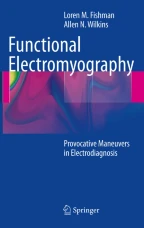
Electricity was used therapeutically long before it took on a diagnostic role. Historically, electrodiagnosis began after the twin births of neurophysiology and the physics of electricity itself in the late eighteenth century. Their early developments were closely related, the first battery being designed after the electric fish, and early theories of motility imagining muscles much like condensers. When each subject evolved to independent and reliable principles, then one (electrical measurement) could be used to study the other (neurophysiology) and electrodiagnosis began. This chapter relates the confused but determined efforts of brilliant and above all determined individuals, at times generating more heat than light, but always seeking to understand our subject.
The history of electrodiagnosis and electromyography has been one of increasing quantification on diminishing areas; from the millisecond impulse of the faradic coil to the hundredth millisecond impulse of the electronic generator; from the large percutaneous electrode to the barely visible tip of a needle; from the muscle to the muscle fiber. It would seem that we have reached the limits of minuteness in time and tip. But the one great lesson of the history of science is that the boundaries of knowledge are not fixed [ 1 ].
This is a preview of subscription content, log in via an institution to check access.